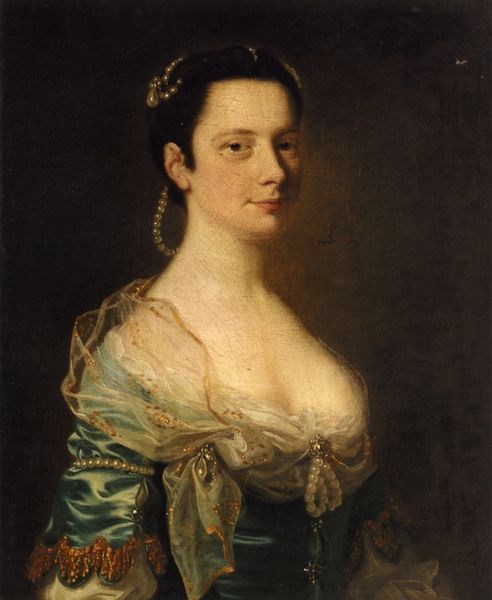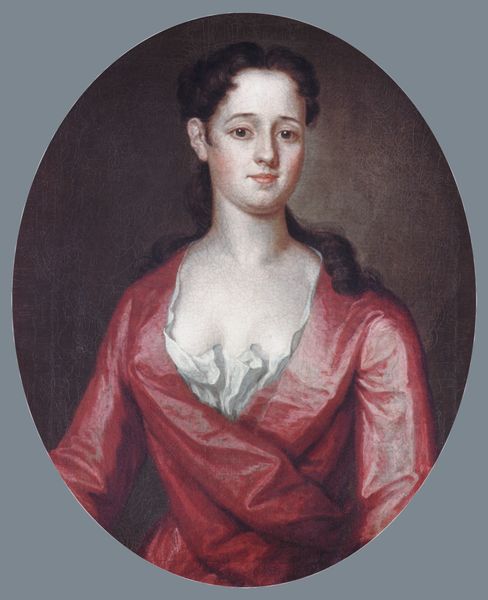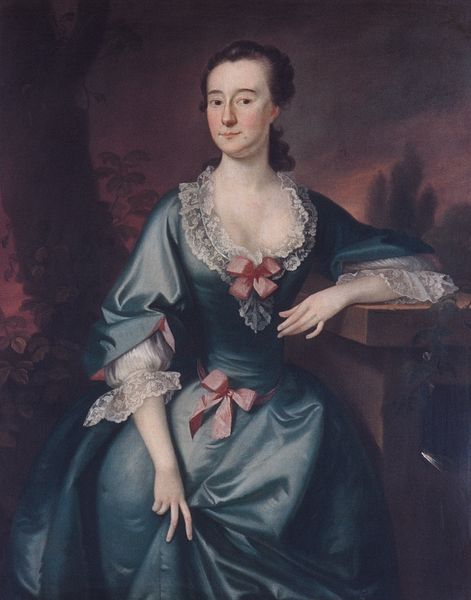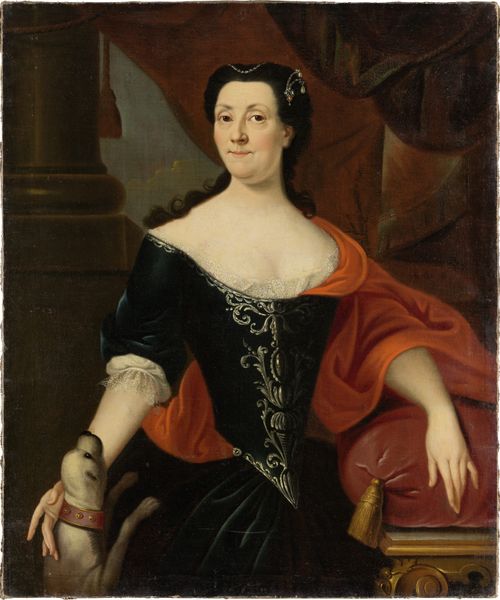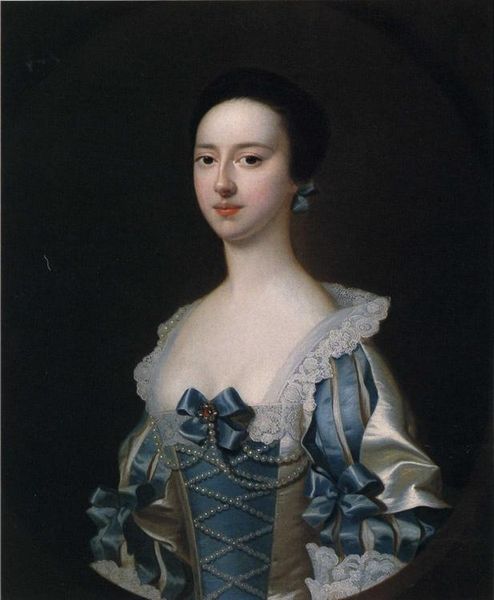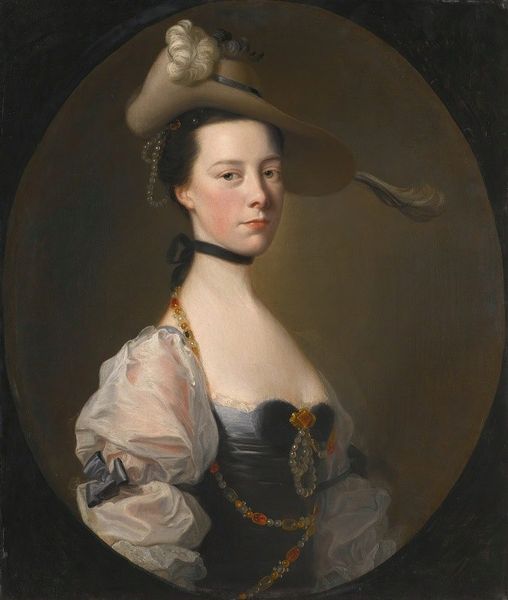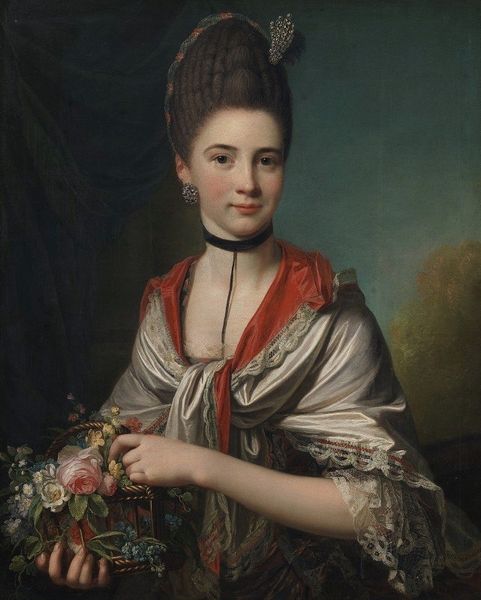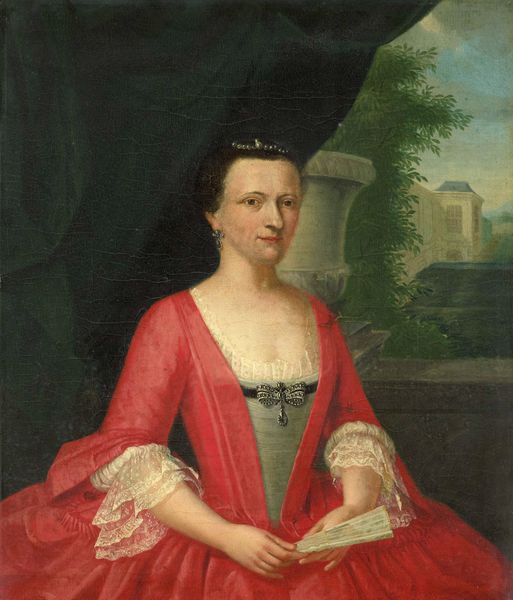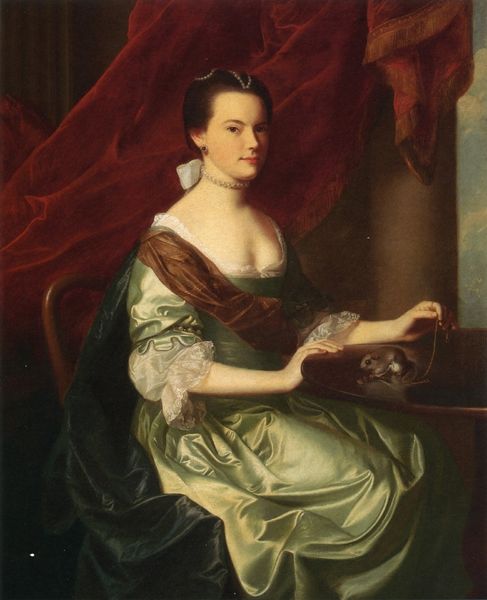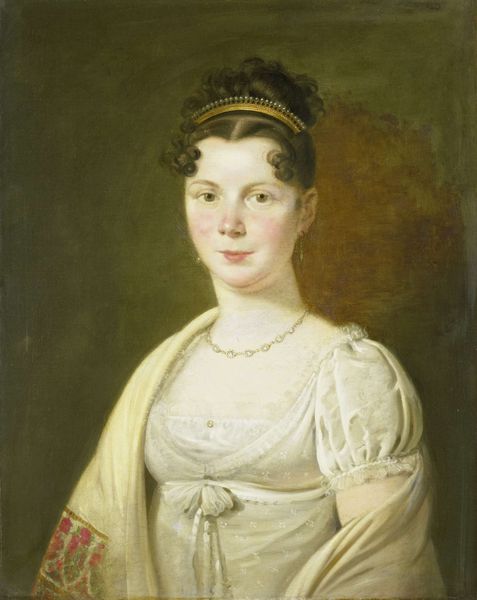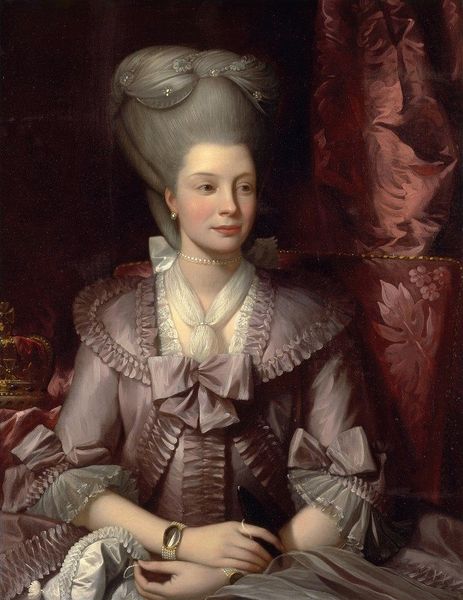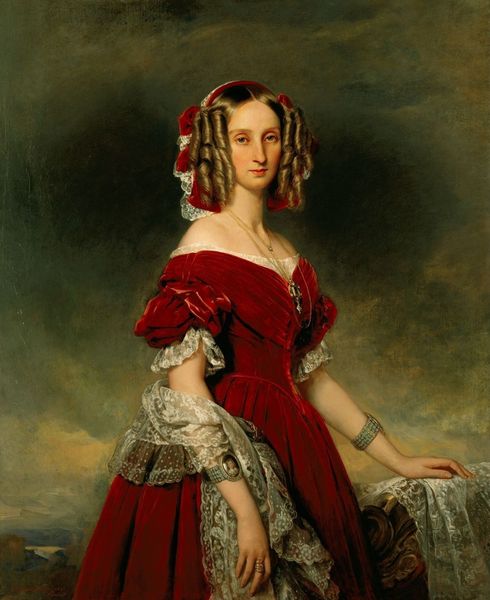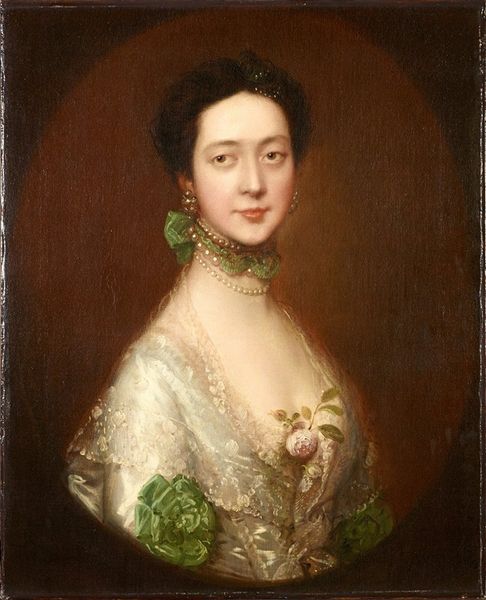
Dimensions: 77.5 x 64.1 cm
Copyright: Public domain
Curator: Here we have Joseph Wright of Derby’s "Portrait of a Lady," created around 1760, currently residing here at the Saint Louis Art Museum. Editor: It strikes me as almost porcelain-like, her skin especially. There's a stillness and formality, but the fabric looks like it wants to come alive. Curator: Absolutely, Wright was keenly interested in depicting societal standing through these portraits. The way he captures the texture and light on her satin dress speaks to her family’s wealth and status in 18th-century British society. Editor: Look at how that luminosity isn't just from the light source, it's built into the paint itself! The material clearly becomes part of the message. I bet she sat for hours. Did the production itself serve any purposes other than just delivering "a pretty portrait" in that time? Curator: Without a doubt. Portraiture was a key vehicle for social mobility. Patrons used paintings like this to consolidate their power or demonstrate their rise, particularly within mercantile circles. Think about what this would mean when sent for viewing across political borders in England, or even on other continents through trade. Editor: And notice the pearls: a symbol of status and good taste of that era, as well as, quite literally, a product of colonial exploitation, perhaps showing the moral and ethical problems behind luxury in England in the mid 1700s? How interesting. Curator: Indeed, those imported materials held complicated social and ethical baggage. But Wright also engages with the emerging Romantic aesthetic; her slight smile softens the otherwise stern, almost academic style, hinting at individual character beyond just social signifiers. Editor: True. It's almost like there is both individual assertion and collective portraiture tradition at play. It gives the impression of social constraint and personal resistance against them coexisting in the same plane. What does the museum hope for visitors to experience as they come upon this painting? Curator: The museum provides a space to consider those tensions - how artists negotiate convention, class, commerce, and individuality in a time of dramatic social change, offering us context for navigating those themes today. Editor: I'll be thinking about those pearls and their cost! A lovely and layered work; thank you for pointing this out.
Comments
No comments
Be the first to comment and join the conversation on the ultimate creative platform.
